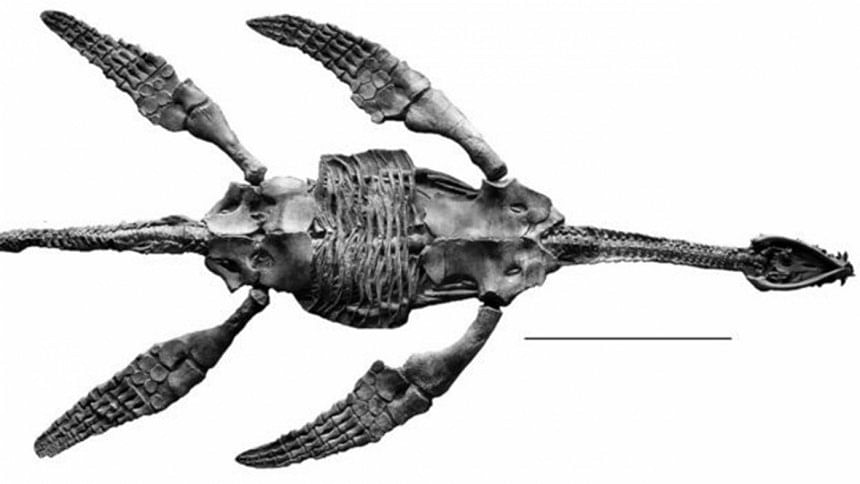200-year-old fossil mystery resolved

Scientists have reconstructed how an ancient reptile swam in the oceans at the time of the dinosaurs.
Computer simulations suggest the plesiosaur moved through the water like a penguin, using its front limbs as paddles and back limbs for steering.
The creature's swimming gait has been a mystery since bones of the first known specimen were dug out of a Dorset cliff 200 years ago.
The plesiosaur was discovered by the fossil hunter Mary Anning in 1821.
At the time even the name dinosaur had not been invented.
A scientific paper unveiling Anning's find a few years later raised the question of how the marine creature swam, given its unusual pairs of wing-like flippers.

The debate has continued until today, with a computer simulation based on a Jurassic fossil specimen providing evidence in favour of penguin-like motion.
Dr Adam Smith of Nottingham Natural History Museum, Wollaton Hall, worked on the study.
He explained that palaeontologists were divided on whether the marine creature used its four limbs in a rowing action like the oars of a boat; a flight stroke similar to modern penguins and turtles; or some sort of combination of the two.
"Our study shows the up-and-down movement is more likely," he told BBC News.
"That's how turtles and penguins swim today.
"Penguins are literally flying through the water."
'WEAK THRUST'
The study, published in the scientific journal PLOS ONE, is based on a computer simulation of a Jurassic fossil from Germany.
The fossil is unusual in being an almost complete skeleton with all four limbs preserved.
It is smaller than many other members of the plesiosaur family, at about 3m long.
The computer model shows the animal's hind limbs provided "relatively weak thrust", say Dr Smith and co-researchers at the Georgia Institute of Technology in Atlanta, US.
"We conclude that plesiosaurs were forelimb-dominated swimmers that used their hind limbs mainly for manoeuvrability and stability," they report.
FEROCIOUS PREDATORS
The plesiosaurs were predatory marine reptiles that lived at the time of the dinosaurs.
They are unique in the animal kingdom for having two pairs of large wing-like flippers.
Palaeobiology expert Dr David Martill of the University of Portsmouth said the new work suggested that in the small plesiosaur at least, the forelimbs did all the work.
He said it remained to be seen if the same was true of the largest plesiosaurs, which were ferocious marine predators.
"These beasts probably fed by twist feeding like the large crocodiles of today," he said.
"If this were the case, then the hind limbs may have been used to spin the animal on its long axis."

 For all latest news, follow The Daily Star's Google News channel.
For all latest news, follow The Daily Star's Google News channel. 








Comments